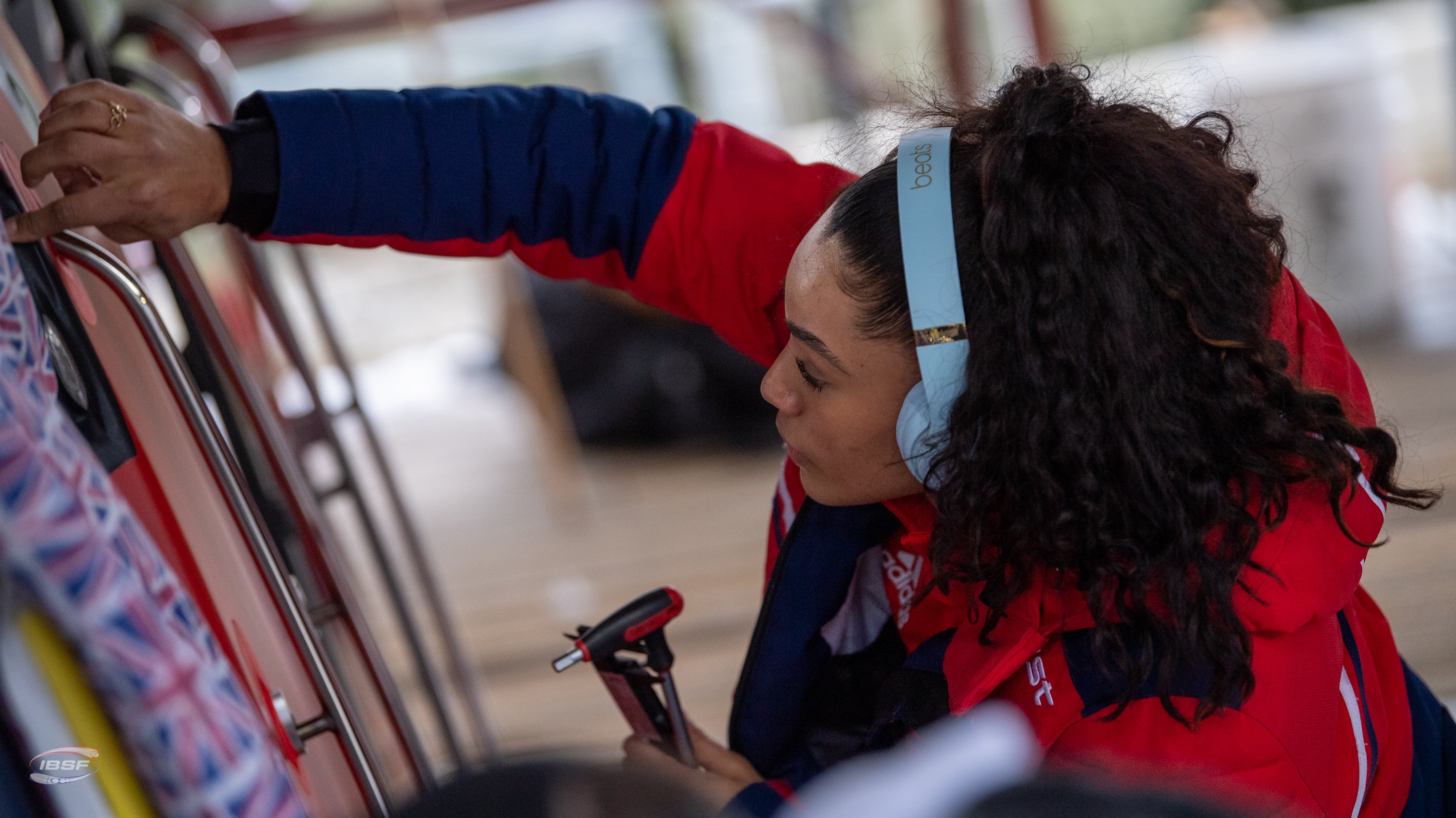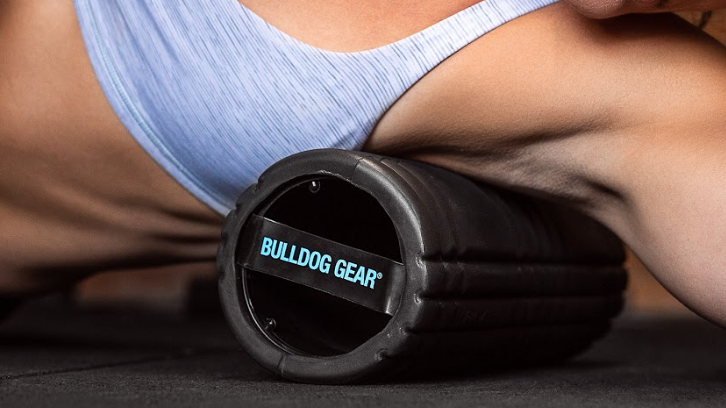|
11/02/2022 | Andrew Tracey Andrew Tracey is a long time collaborator with Bulldog Gear. A coach, writer and current fitness editor of Men’s Health Magazine, he has been in and around the fitness industry for the past 17 years. Having enjoyed and endured a number of disciplines from endurance racing, to strongman, to Crossfit AT enjoys getting neck deep in the practice just as much as the theory. |
It’s almost a broken record at this point to posit that ‘we need to build more than the muscles we can see in the mirror’, and it’s highly unlikely that anyone reading this has focussed solely on their chest and biceps in the last decade or so.
With that being said, it’s still damn near impossible to overemphasise the importance of the posterior chain- the group of muscles that run from floor to head at the rear of your body, including your calves, hamstrings, glutes and erector spinae. Developing strength and stability through these muscles is not just vital in building a balanced physique, but pivotal for athletic performance across the board, whether you’re strongman, a sprinter or a dancer.
In many ways the posterior chain is the gateway to full body power, enabling you to quickly (and safely) translate strength from the large muscles of the lower body up and through the upper body. With this in mind there are very few exercises that wouldn’t immediately benefit from a stronger, more capable posterior chain.
Include these movements in your routine maximise your posterior chain training, and ensure that what’s out of site, definitely isn’t out of mind.
Sled Push

When it comes to expressing power from the floor and outputting it through your upper body there’s no more clear example than the sled push. Each step requires the maintenance of a rigid structure from foot on the ground to hand on the sled. Think of the muscles of your posterior chain as an electrical circuit, more heavy duty wiring will allow you to carry a stronger current, and on the flip side- any break in the circuit will result in a power cut.
Heavy sled pushes are a fantastic way to safely overload your posterior chain, with minimal injury risk (baling out of a sled push is far simpler than a squat or deadlift, you simply… stop). The lack of eccentric contraction also means the sled push is a movement that’s unlikely to interfere with the rest of your training, making it a great option for recovery, allowing you to get in additional posterior chain work between sessions.
A majorly versatile movement in terms of programming, everything from heavy 15-30m sets, to longer 20 minute conditioning bouts will be beneficial, whatever your goals.
Walking Lunges
It may not receive as much good press as the squat or deadlift, but the lunge is still a fundamental movement pattern that ticks many boxes that even the best squat/ hinge variations can’t.
Working unilaterally is often cited as taxing the stabilising muscles of your core, which is both true and incredibly beneficial- but a lesser known (albeit ‘kick yourself’ obvious) benefit of working one limb at a time is that enables you to lower the total weight you’re lifting, whilst maintaining the stimulus; this can be hugely important in minimising injury risk, rehabbing existing niggles or for those with limited weights.
Walking lunges are a ‘locomotive’ movement, meaning you’re moving your body through space. Just like the sled push this makes them tremendously effective for ‘teaching’ your posterior chain to work as one unit- with each muscle taking it’s turn to push, pull and stabilise; the latter of which is highlighted in heavy walking lunges where each step can provide a unique challenge to your balance.
Being forced to maintain an upright torso throughout such a dynamic movement also creates an environment that’s the perfect antidote to the slumped forward, desk bound position many of us find ourselves in.
Back Extensions
Whilst most posterior chain movements focus on leveraging the raw strength of the hamstring and glutes to lift heavy, this body weight option takes the opposite approach, providing an entry level option for training your posterior chain, whatever your starting point.
Locking your lower body in place is a great way to drill hinge mechanics, removing your ability to slip in to a more squat dominant movement. This enables you to really focus on contracting your glutes at the top of each movement whilst also ‘feeling’ the erector muscles of your back working to keep upper body aligned and in a rigid, ‘plank’ like position.
Focussing on the mind/ muscle connection and using high reps to drive blood into the muscles of the posterior chain make this an excellent movement to use as a warm-up for a heavier session, as well as a perfect ‘restorative’ exercise to throw in between sessions, warding off DOM’s and aiding in recovery.
Easily loadable by simply holding a plate, dumbbell or barbell, the simple addition of a band around the neck will turn the back extension into a dynamic movement, drilling speed and building power through the hips and glutes whilst strengthening the erectors and upper back.
Deadlifts

By far and away the best ‘bang for buck’ movement for your posterior chain, if not your entire body. No other movement will allow you to put as much load through all of the muscles in the chain, creating an incredibly anabolic environment.
A correctly executed deadlift recruits every muscle in chain for the majority of the movement, forcing them to work together optimally and putting them into the most advantageous position to move the most weight.
Variations such as the Romanian or stiff legged deadlift may target the hamstrings and glutes with more accuracy, but they’ll force you to use a lower load versus the conventional deadlift. This isn’t necessarily a bad thing, and highlights that for complete posterior chain development a spread of deadlift variations may ultimately be best, but if you’re pushed for time- the conventional deadlift reigns supreme.
Kettlebell Swings
The deadlift may be king when it comes to building raw strength through the posterior chain, but for strength endurance, explosiveness and pure athleticism the kettlebell swing takes the win.
Enabling you to work in higher rep ranges that are less advisable with heavy deadlifts will build endurance through your glutes, erectors and grip whilst also eliciting a metabolic conditioning effect. These higher rep ranges are also crucial for tapping into the deep muscle stabilisers that run up and down your spine, increasing the durability of your posterior chain and helping to prevent injury risk in heavier lifts.
Although you may be working with significantly lighter weights compared to other lifts on this list, the real magic of the swing comes not from how much weight you’re lifting, but how fast you’re lifting it. A properly executed ‘hard style’ kettlebell swing, requires aggressive hip extension, building the type of explosive glutes that are the hallmark of athletic development.
High rep swings have been shown to time and time again to have beneficial carryover to nigh on every athletics pursuit. Moreover, much like the back extensions we listed above, they can be performed with a high frequency, even daily, for a restorative effect and to simply ‘keep the body moving’ between heavier sessions. After all- it’s the hinge that gets used the most, that rusts the least.



